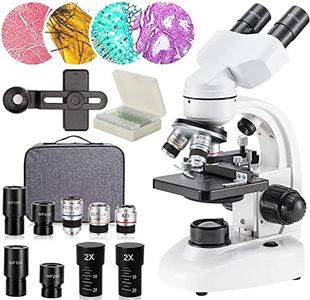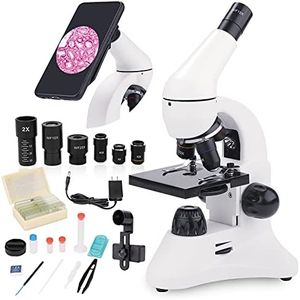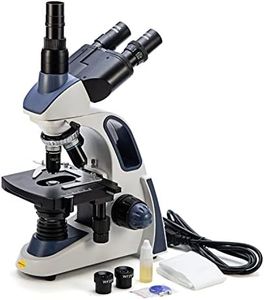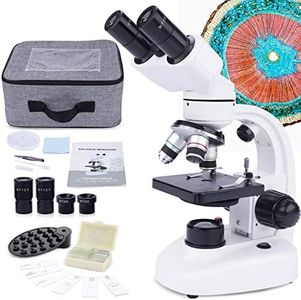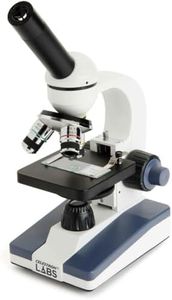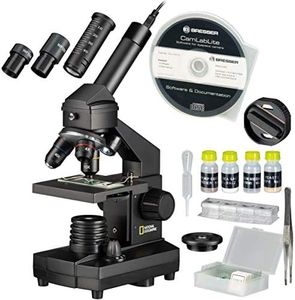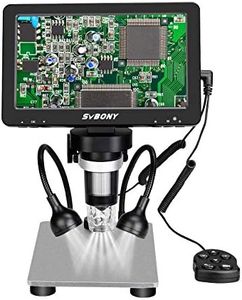We Use CookiesWe use cookies to enhance the security, performance,
functionality and for analytical and promotional activities. By continuing to browse this site you
are agreeing to our privacy policy
10 Best Microscope For Adult Beginners
From leading brands and best sellers available on the web.Buying Guide for the Best Microscope For Adult Beginners
Choosing a microscope for adult beginners can be an exciting entry into the world of science and discovery. The right microscope lets you explore everything from plant cells to tiny creatures, and having a clear understanding of its main features will help you enjoy this experience to the fullest. When picking a microscope, it's important to consider how you'll use it, what you want to observe, and how easy it is to set up and use. Focusing on a few main features will simplify your decision and ensure you find something that's both capable and beginner-friendly.Type (Compound vs. Stereo)The type of microscope affects what you can see with it. Compound microscopes use high magnification and are made for viewing tiny details like cells, bacteria, or thin tissue slices, while stereo microscopes offer lower magnification and are better for looking at larger objects that don’t require as much detail, like leaves, coins, or insects. When choosing between them, think about your main interests: if you want to explore very small details, go for a compound microscope; if you want to look at larger, solid objects, a stereo microscope will be more fun and easy to use.
Magnification RangeMagnification indicates how much closer the object appears when viewed through the microscope. Beginner microscopes typically offer ranges from 40x to 1000x. Lower magnifications (up to 100x) are good for larger samples, while higher magnifications (400x to 1000x) are needed to observe things like cell structures. The right range depends on what you plan to examine: for plant cells, tiny organisms, or basic tissue samples, mid-to-high magnification is ideal, but for coins or insects, lower magnification is sufficient and easier to use.
Optical Quality (Glass vs. Plastic Lenses)The quality of the lens dramatically affects how clear and sharp the image appears. Glass lenses are preferred as they produce brighter and sharper images compared to plastic lenses, which can be less clear and may scratch more easily. As a beginner, choosing a microscope with glass optics will make your viewing experience much more enjoyable and accurate, especially when you’re learning to identify new details.
Illumination (Type and Adjustability)Illumination helps you see your samples clearly. Some microscopes use built-in LED lights, while others use mirrors to reflect external light. LEDs are convenient and consistent, while mirrors require an outside light source. Many microscopes also allow you to adjust the brightness. For beginners, having adjustable, built-in LED lighting makes it much easier to get a good view, especially in different room conditions or when observing samples at various magnifications.
Ease of Use (Focusing and Controls)How easy a microscope is to operate can make a big difference, especially for beginners. Smooth and precise focusing knobs help bring the sample into sharp view without frustration, and controls that are easy to reach and understand reduce the learning curve. Look for instruments that are stable, have clearly marked knobs, and provide straightforward instructions—these features will help you spend more time exploring and less time trying to figure out how things work.
Portability and Build QualityWhere and how often you plan to use your microscope affects the importance of size and construction. A sturdy, well-built frame helps prevent vibrations and keeps everything stable for clear viewing, while lighter or compact models are easier to move but might be less stable. If you want to use the microscope in different places (at home, at a lab, or outside), having a portable and robust model is a good idea, but always balance portability with a solid, steady build for the best performance.
